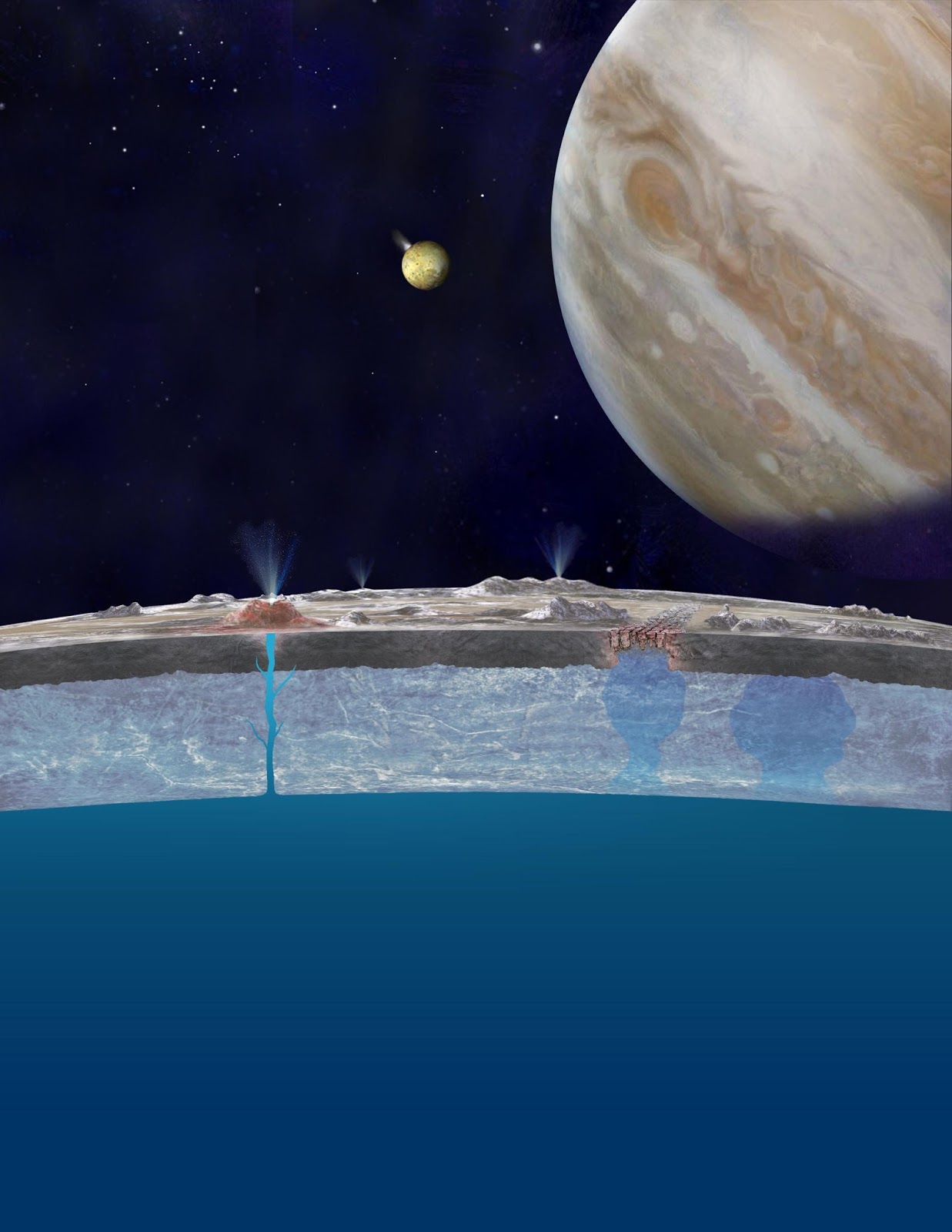
Just how thick is the ice on Europa? Europa is a water-ice
encased moon orbiting around Jupiter and scientists are beginning to ask
questions about how they might determine the thickness of this ice. We know
that there is water below the ice because geysers that spew water into the
tenuous atmosphere above have been detected. It is speculated that microbial or
even higher eukaryotic life could exist in the water below and so there is
great interest in cracking through the frigid crust to see what lies beneath.
encased moon orbiting around Jupiter and scientists are beginning to ask
questions about how they might determine the thickness of this ice. We know
that there is water below the ice because geysers that spew water into the
tenuous atmosphere above have been detected. It is speculated that microbial or
even higher eukaryotic life could exist in the water below and so there is
great interest in cracking through the frigid crust to see what lies beneath.
NASA has a mission scheduled for the 2020s that would include
a flyby and possibly seismic measurements.[1]
Lately, it has been suggested that an empty propellant tank could be sent
hurtling onto the ice while the flyby-craft could measure the ripples created
by such an impact. Slower propagating waves would indicate thicker ice; faster
waves would indicate thinner ice.
a flyby and possibly seismic measurements.[1]
Lately, it has been suggested that an empty propellant tank could be sent
hurtling onto the ice while the flyby-craft could measure the ripples created
by such an impact. Slower propagating waves would indicate thicker ice; faster
waves would indicate thinner ice.
The international community must weigh in on the ethics of
littering another moon surface with our cosmic space junk, even if the purposes
could be considered noble. One must also consider that any propellant tank that
originates from a DNA rich and biologically fertile world like earth, could inadvertently
introduce life (or at least DNA) to a potentially fragile ecosystem. Might
Earth-life compete with primitive life of another form and disrupt the natural
progression on that pristine world? Might our cosmic litter disrupt the fragile
ecology of other-worldly biology?
littering another moon surface with our cosmic space junk, even if the purposes
could be considered noble. One must also consider that any propellant tank that
originates from a DNA rich and biologically fertile world like earth, could inadvertently
introduce life (or at least DNA) to a potentially fragile ecosystem. Might
Earth-life compete with primitive life of another form and disrupt the natural
progression on that pristine world? Might our cosmic litter disrupt the fragile
ecology of other-worldly biology?
[1] Science News, “Seismic experiment
might reveal thickness of Europa’s ice,” 2015-05-25; https://www.sciencenews.org/article/seismic-experiment-might-reveal-thickness-europa’s-ice
might reveal thickness of Europa’s ice,” 2015-05-25; https://www.sciencenews.org/article/seismic-experiment-might-reveal-thickness-europa’s-ice